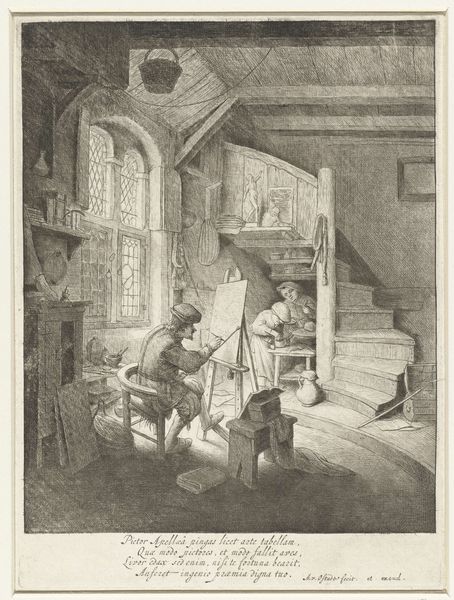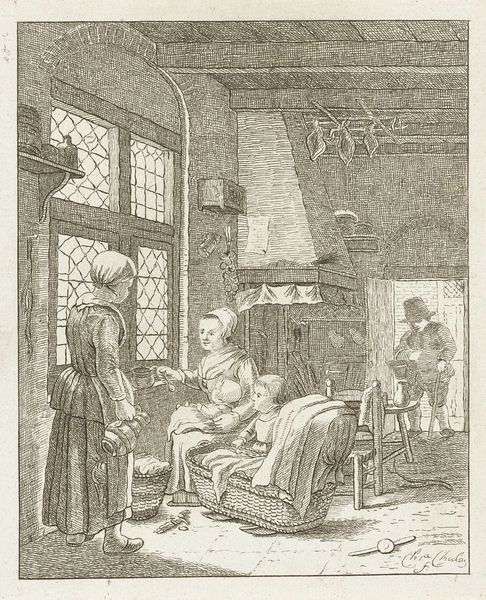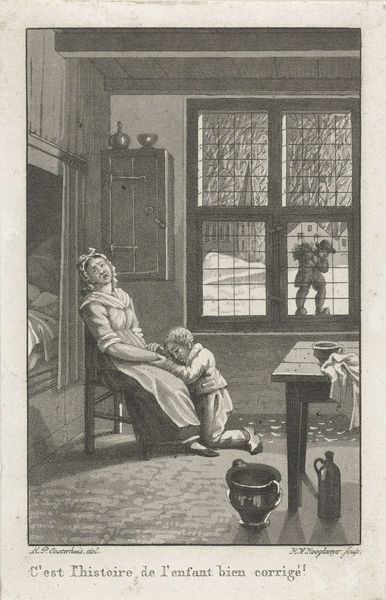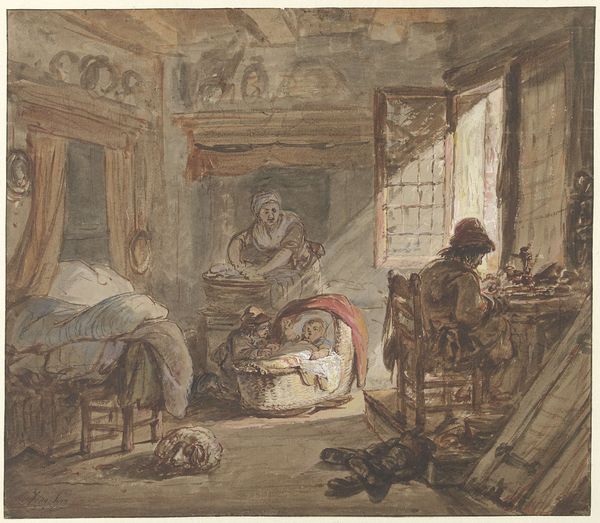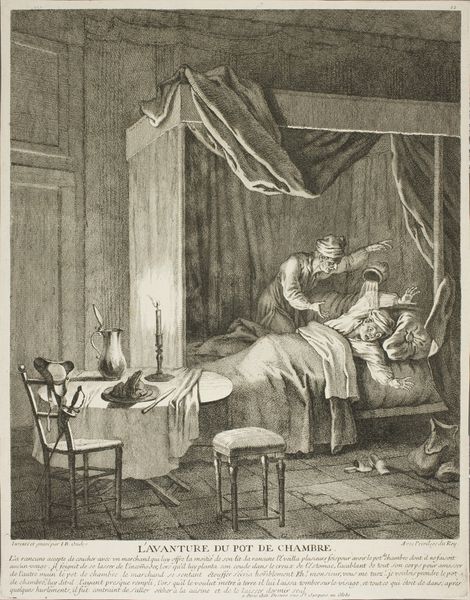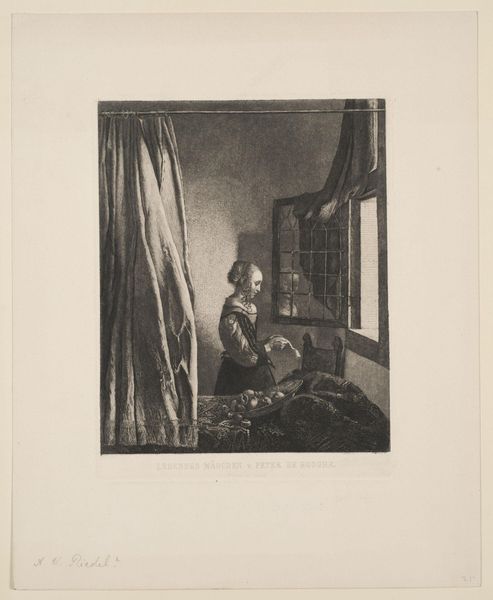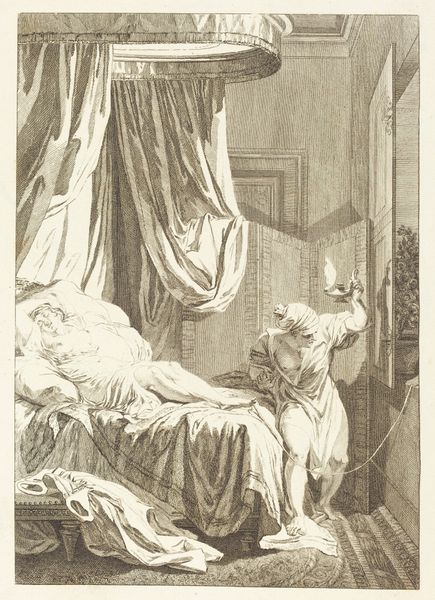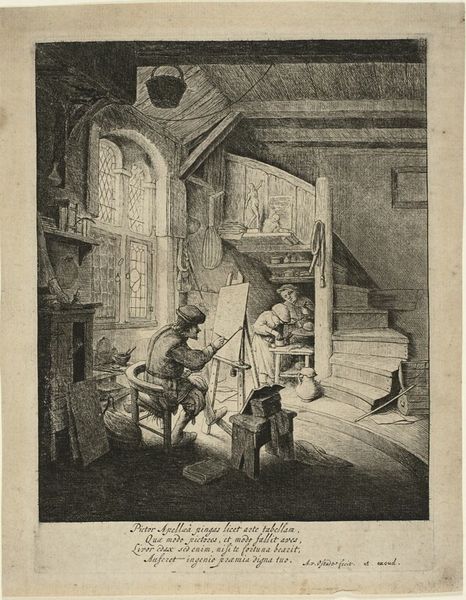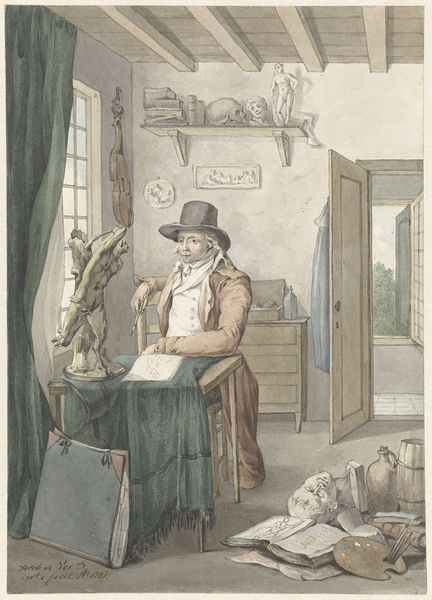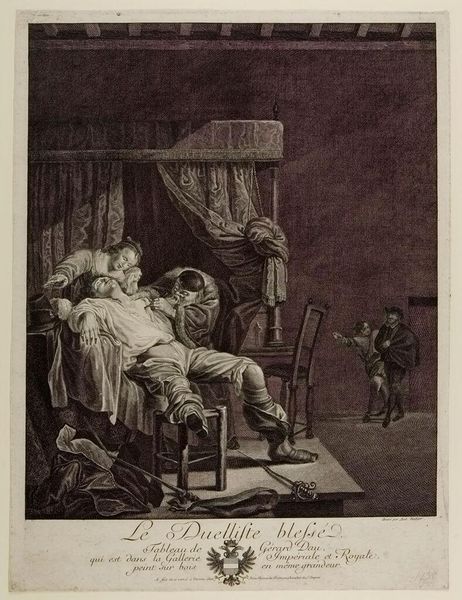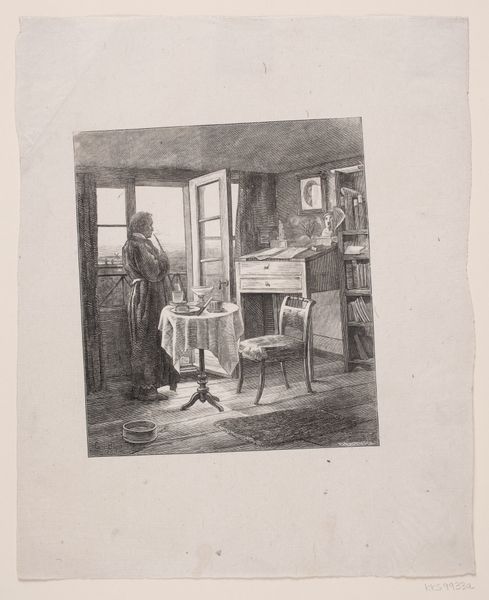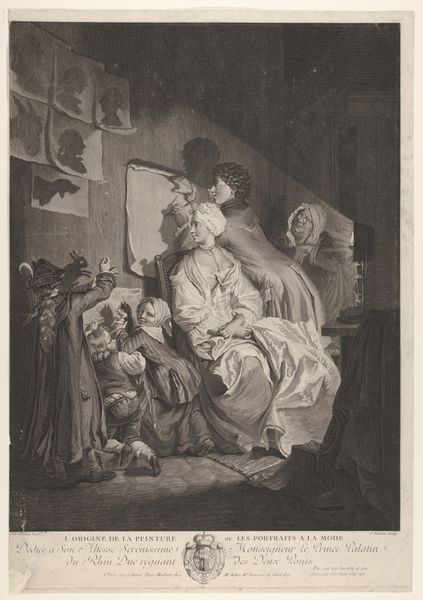
painting, watercolor
#
narrative-art
#
muted colour palette
#
baroque
#
painting
#
figuration
#
watercolor
#
underpainting
#
painting painterly
#
genre-painting
#
mixed media
#
watercolor
Dimensions: height 389 mm, width 318 mm
Copyright: Rijks Museum: Open Domain
Editor: This watercolor painting, “Scène uit het blijspel Krispijn Medicijn” by Cornelis Troost, made sometime between 1706 and 1750 and held at the Rijksmuseum, strikes me as oddly staged. It's like a snapshot of a very theatrical moment. What stands out to you? Curator: The first thing I notice is the means of production. The choice of watercolor and a mixed-media approach, along with the painterly underpainting technique, points to a very deliberate artistic decision to represent this theatrical moment. But what about the actual stagecraft and materials used within the play? The costume, the furniture, even the skeleton in the cabinet, each were manufactured, consumed, and signified social roles of the time. Editor: That's an interesting take. So, the objects within the painting aren't just props; they're also representative of something broader? Curator: Precisely! Think about the clothing, how it might have been tailored. Consider also the tools and the quack doctor's trade, were they cheaply made or expensively wrought? This can tells us about the social critique that’s embedded in the material choices represented, as it comments on the availability of healthcare, the costs, and the consumption of medical treatment as commodity. How labor and consumption shaped cultural understanding is key here. Editor: I never thought of it that way. It makes me look at the objects depicted as signifiers of social standing. So how the scene is crafted tells a story beyond the play? Curator: Absolutely. Every element, from the cheap paper used for sketches to the costume designs, tells a larger tale of commerce and performance in society. Considering it in this light moves the focus beyond high art toward labor, materials, and societal commentary. Editor: That is incredibly insightful. I was stuck on the narrative but thinking about the production element completely changes my perception. Curator: Art gives us a window, not just into narrative, but into the way society functions on a more grounded, material level.
Comments
No comments
Be the first to comment and join the conversation on the ultimate creative platform.
